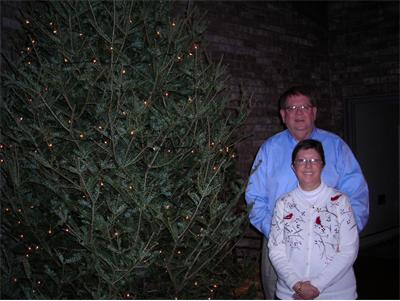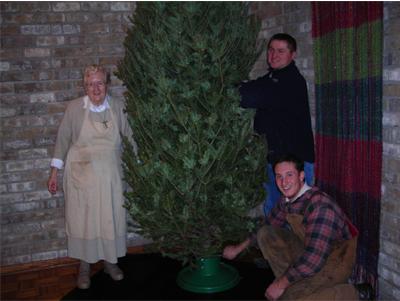Archive for the ‘Celebrations’ Category
Tanie and me
Sisters’ Oral History Project
Through a generous grant from the Hilton Foundation to St Catherine University, Religious Sisters in our area were invited to participate in an oral history project chronicling the lives of Women Religious. The purpose of the project is to connect collage women with Women Religious and to create a clearinghouse of electronic media to support those seeking vocations in religious life. There was an underlying hope that the Student and the Sister would develop a personal relationship. Tanell Green and Sr. Beth were paired up. They “connected” the moment they met..
Energies
There are truly no words to describe how beautiful and meaningful interactions have been with my Sister. With her bubbly bright spirit, loving energy and lovely connection, Sister Beth is truly a gem. The first time I met her, the first thing I noticed right away was her smile. I couldn’t believe the amount of charisma she had! I could tell that we would make a connection right away. I had many conversations with Beth and during one found that we had many similarities, one significant similarity being our love and feeling for good energy. Compassion, love and seeking true joy in life are among the many things Sister Beth likes to share with me. I have learned so much from my Sister and I can say she is truly like a second mother and teacher to me.
As I have been given the opportunity to meet this wonderful woman, I have been able to learn a lot not only about my Sister but a lot about myself as well. Learning about Sister Beth has been a very exciting experience as I was able to learn more about the unique lives of nuns and sisters alike and the beautiful lives they lead. I expect to continue my relation with Beth being just as fun, intriguing and full of amazing energy as I experienced the first time we met.
Tanell Green, University of Saint Catherine. Tanie is a Communications major and hopes to work in Hollywood.
The Three Great Easter Days, celebrating the Passion, Death and Resurrection of the Lord
Dear friends,
Tucked into the January 13, 2014 address given by Pope Francis to diplomats accredited to the Vatican was this curious statement,
“God always forgives, we forgive sometimes, but when nature—creation—is mistreated, she never forgives!”
For believers in God who is love, the first part of the statement is fundamental to our faith. As to the second part, experience tells us that humans have an uneven record on forgiveness.
The third part of this statement gives pause for thought. In context, Pope Francis was using the quotation regarding the unforgiving nature of creation to advocate care for the environment as our common home.
But is creation unforgiving? Or is creation continually forgiving, allowing us the freedom to choose to care—or not to care. St. Francis in his well-known Canticle of the Creatures sees all created reality, including human beings, in familial terms, praising the God of all creatures. Closer to our own times is the Irish poet Gerard Manley Hopkins, SJ of the 19th century, assuring us that “The world is charged with the grandeur of God.”
Ours is a changing world. The Christian interpretation of evolution credits God with so much love for us as to allow our participation in the development of this cosmic order. Sometimes the work is ecstatically beautiful and at others bitterly painful.
Throughout the liturgies of Holy Week and into the amazing celebration of the Lord’s Resurrection we are mindful of you and your families. May you know the deep truth that in God’s economy the pain we share with the Lord always leads to the joyful surprise of resurrection.
With grateful hearts for your friendship and support, we are
Your Poor Clare Sisters
HOLY WEEK, 2014
Schedule for Holy Week Services
at the Monastery:
Palm Sunday, April 13, 2014
Michael Joncas: Eucharist at 9: a.m.
Monday-Wednesday
Eucharist: 7:30 a.m.
Holy Thursday,
Celebration of the Lord’s Supper
6:30 p.m,
followed by Eucharistic Adoration.
Good Friday,
Services at 3:30 p.m.
Holy Saturday,
Easter Vigil and Eucharist,
8:00 p.m.
New Years Eve
Prayer for Peace in our World
for this New Year of our Lord, 2014
Gathering
Taize #37 Within our Darkest Night
Lighting of candles near Our Lady of Compassion Icon
Leader begins: Let us praise the Lord of days and seasons and years, saying: Glory to God in the Highest!
All respond: And peace to God’s people on earth!
Taize #16 Glory to God in the Highest
Silence Taize # 29 Nothing Can Trouble
Silence
Passing of the Light
Lighting of the vigil lights
Taize # 36 The Lord is my Light
Silence
Leader: Our lives are made of days and nights, season and years, for we are part of a universe of suns and moons and planets.
We mark ends and we make beginnings and, in all, and we praise God for the grace and mercy that fill our days.
Word of God
Reading from the Scripture, Gen. 1:14-19; 26-28a.
Silence
Taize #48 Sing Praises
During the singing come forward and place your vigil light on the stand by Our Lady.
Psalm 91 prayed in choirs:
Universal Prayer
Taize #28 Come and Fill our Hearts
Let us pray for God’s blessing in this New Year.
Intercessions:
Remember us, O God;
From age to age be our comforter.
You have given us the wonder of time,
blessings in days and nights, seasons and years.
Bless your children at the turning of the year
and fill our months ahead with the bright hope
that is ours in the coming of Christ.
You are our God, abiding with us for ever and ever.
R. Amen.
Thanksgiving
Taize #47 In the Lord I am ever thankful
Silence
Taize #30 Lord of All Goodnes
Midnight
Christmas, 2013
Dear Family and Friends,
Earth and sky are connected in this photo by Dale Kaminsky of Kearney, Nebraska. In the photo we see lightning over a village, or a village calling forth lightning. For some people lightning could be a frequent experience that lights up the sky and passes in a moment. Or depending on your perspective, you might experience a cosmic moment of connectivity when the electrical energy in the atmosphere seeks a partner with the opposite charge, and equalizes the atmosphere with a show of light. When two of our Sisters saw Dale’s photo on CNN, they looked at one another and said “Christmas!” Sister Gabriel contacted her nephew and he agreed enthusiastically to let us use his photo for our Christmas greeting this year.
One Sister looked at the photo and saw the Word of God made flesh in a small town named Bethlehem, the sky alight with signs and wonders. For another Sister it was a dramatic demonstration of cosmic beauty that only now scientists are beginning to understand. We see the little town and the great force of energy; the ordinary and the unusual.
The photo could be prompting our inner world, nudging memories and feelings from the past. Or it could be calling our imagination into the future when ordinary people will ride a space craft beyond our atmosphere. It might be an invitation to ready ourselves to move from this life into the spiritual realm of life beyond death.
For all who are in awe of theology in conversation with scientific study, this is a reminder that theologians and scientists for most of the centuries following Christ’s life on earth worked closely together to express the reality and wonder of life.
The First Christmas was an open system, that is, people in their environment exchanging and sharing with one another: the Child, Mary, Joseph, shepherds and kings. Animals provided not a small amount of chaos, entertainment and warmth. The Spirit of God works in openness and confusion. God is with us.
United with you in prayer and affection,
your Sisters at St. Clare’s
Knight Rob and his Lady Lynne

Rob and Lynne are part of our larger community. They worship with us and help with Chapel decor and computers. Shortly before this photo, our very large Douglas Fir at the back of Chapel decided to “walk.” Fortunately no one was in its path. Bill Weldon came to help, and Rob and Bill got the tree standing again and the lights on.










